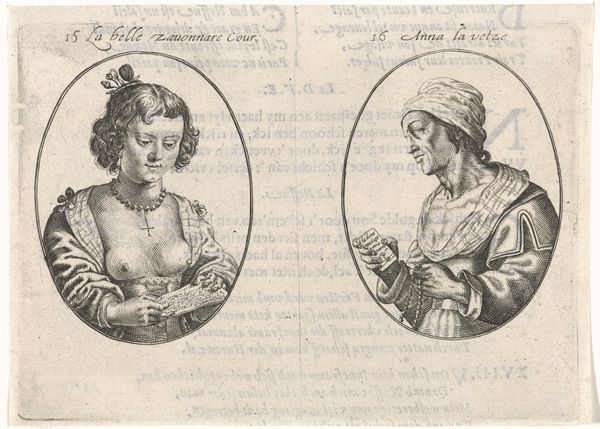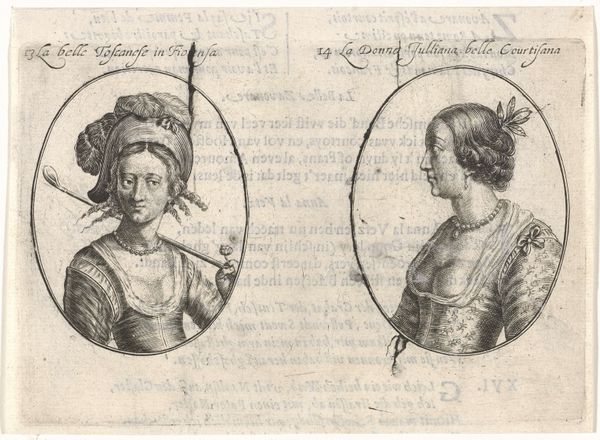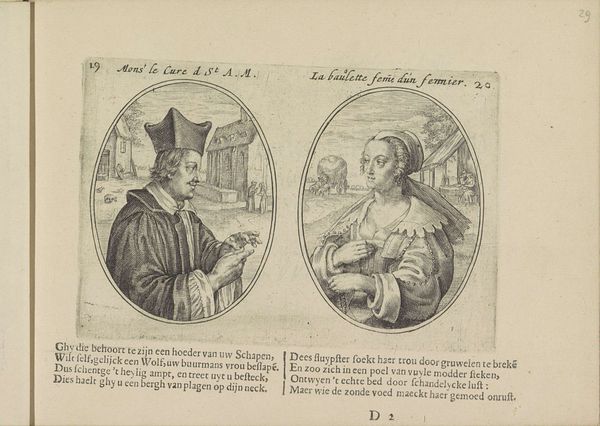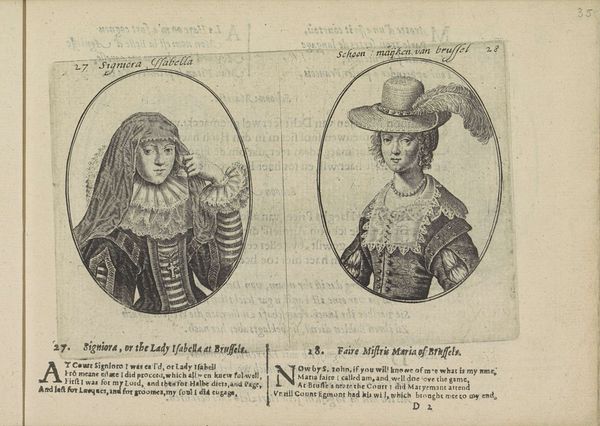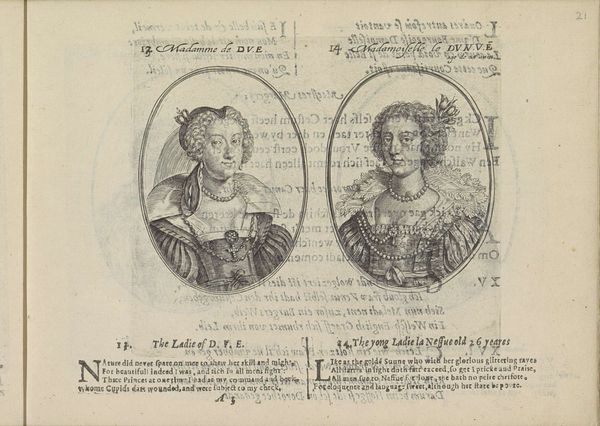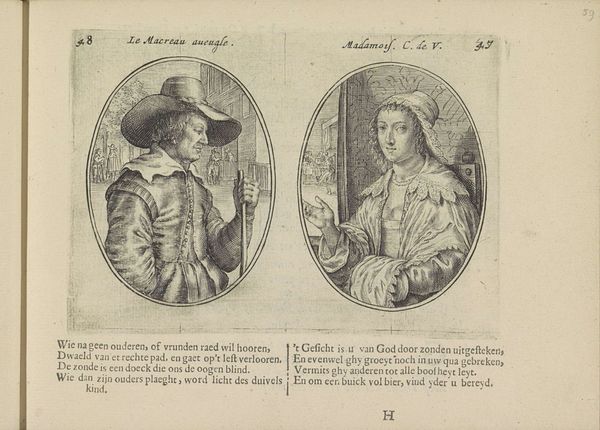
Portretten van de courtisanes genaamd La Belle Zavonare en Anna la Vetz 1635
0:00
0:00
crispijnvandeiipasse
Rijksmuseum
print, engraving
#
portrait
#
baroque
# print
#
figuration
#
genre-painting
#
history-painting
#
engraving
Dimensions: height 109 mm, width 155 mm
Copyright: Rijks Museum: Open Domain
Curator: This print, "Portretten van de courtisanes genaamd La Belle Zavonare en Anna la Vetz," was created by Crispijn van de Passe II around 1635. It presents a fascinating study in contrasts. Editor: It's interesting how the artist has divided the image into two distinct portraits. I’m curious about the use of line and composition here, could you elaborate? Curator: Certainly. Observe the ovals framing each figure. How do these shapes contribute to the overall structure and impact of the work? Notice also the textual elements included in this engraving, a critical component to its full expression. Editor: Well, the ovals certainly isolate the women, almost like specimens. The text seems to act as labels, and reinforces this sense of detachment and almost clinical assessment. The line work gives this a sense of flatness, despite some attempt to give form to the faces and the figures' garments. Is there more that can be said about these aesthetic choices? Curator: Indeed. The sharp, precise lines, typical of engraving, delineate the figures and create a sense of detail, yet, as you pointed out, simultaneously flatten the image. It eschews depth and atmosphere in favor of clarity of line and textual presence. Consider how this choice impacts the reading of the sitters; does it, for example, render a more accurate, if not brutal, image of them? Is there some visual storytelling involved here? Editor: The formality and flatness do seem to objectify the women. It feels less about capturing their personality and more about presenting them as types. The text contributes greatly to the meaning as a viewer attempts to visually interpret the figures, too. Curator: Precisely. The text underscores this and informs your assessment of them. Through considered visual inspection, one is lead to a critical response. I trust you agree. Editor: Yes, that's a good insight. I’m struck by how formal analysis reveals layers of social commentary, or visual judgement that isn't immediately apparent. Curator: A testament to the power of close observation and critical engagement with artistic form.
Comments
No comments
Be the first to comment and join the conversation on the ultimate creative platform.
